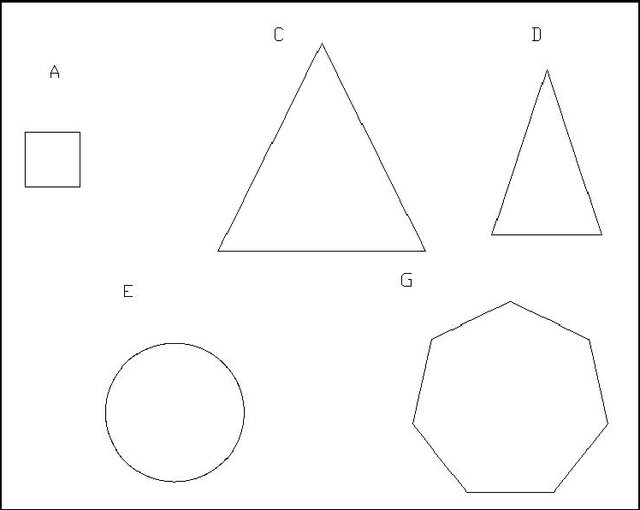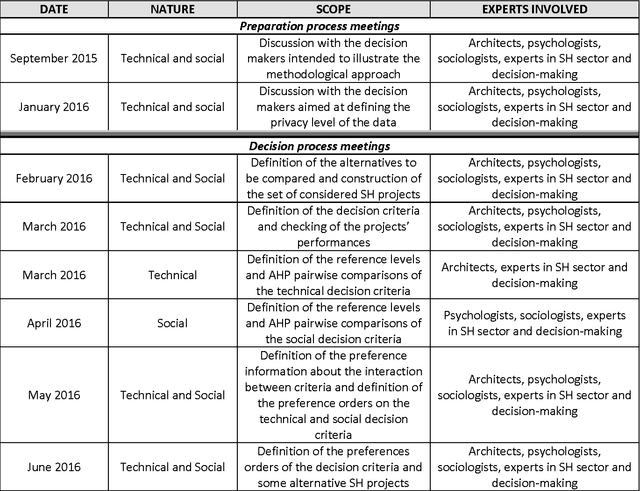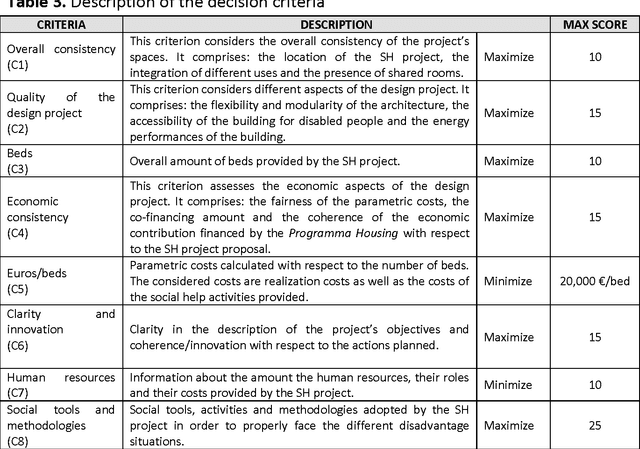Alessio Ishizaka
A multiple criteria methodology for prioritizing and selecting portfolios of urban projects
Dec 13, 2018



Abstract:This paper presents an integrated methodology supporting decisions in urban planning. In particular, it deals with the prioritization and the selection of a portfolio of projects related to buildings of some values for the cultural heritage in cities. In particular, our methodology has been validated to the historical center of Naples, Italy. Each project is assessed on the basis of a set of both quantitative and qualitative criteria with the purpose to determine their level of priority for further selection. This step was performed through the application of the Electre Tri-nC method. This method is a multiple criteria outranking based model for ordinal classification (or sorting) problems and allows to assign a priority level to each project as an analytical `recommendation' tool. A set of resources (namely budgetary constraints) as well as some logical constraints related to urban policy requirements have to be taken into consideration together with the priority of projects in a portfolio analysis model permitting to identify the efficient portfolios and to support the selection of the most adequate set of projects to activate. The process has been conducted thanks to the interaction between analysts, municipality representative and experts. The proposed methodology is generic enough to be applied in other territorial or urban planning problems. More precisely, given the increasing interest of historical cities to restore their cultural heritage the integrated multiple criteria decision aiding analytical tool proposed in this paper has an important potential of being used in the future.
Using a new parsimonious AHP methodology combined with the Choquet integral: An application for evaluating social housing initiatives
Apr 24, 2017



Abstract:We propose a development of the Analytic Hierarchy Process (AHP) permitting to use the methodology also in cases of decision problems with a very large number of alternatives evaluated with respect to several criteria. While the application of the original AHP method involves many pairwise comparisons between alternatives and criteria, our proposal is composed of three steps: (i) direct evaluation of the alternatives at hand on the considered criteria, (ii) selection of some reference evaluations; (iii) application of the original AHP method to reference evaluations; (iv) revision of the direct evaluation on the basis of the prioritization supplied by AHP on reference evaluations. The new proposal has been tested and validated in an experiment conducted on a sample of university students. The new methodology has been therefore applied to a real world problem involving the evaluation of 21 Social Housing initiatives sited in the Piedmont region (Italy). To take into account interaction between criteria, the Choquet integral preference model has been considered within a Non Additive Robust Ordinal Regression approach.
 Add to Chrome
Add to Chrome Add to Firefox
Add to Firefox Add to Edge
Add to Edge